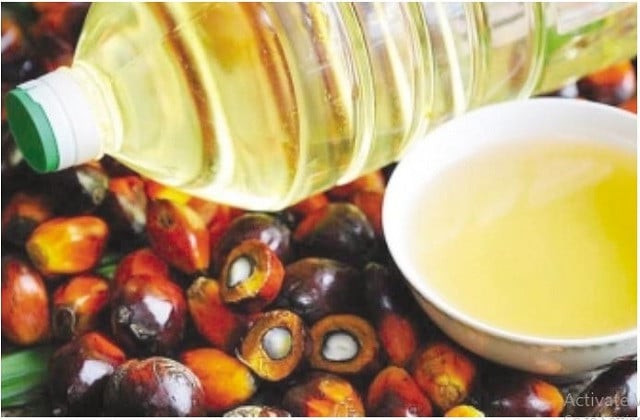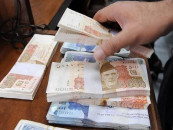Phenomenal rise in food import bill
It is time to develop roadmap for containing food imports which will widen trade gap

We Pakistanis grew very rich – not overnight – but certainly over a year.
The nation of 220 million consumed 78,000 tons of imported dry fruits and nuts and more than 258,000 tons of imported black and green tea in FY21, which closed in June.
Just one year ago, we were not so rich, as we consumed just 22,000 tons of imported dry fruits and nuts and a little more than 221,000 tons of imported teas of all colours and flavours, according to the Pakistan Bureau of Statistics (PBS).
The increase in tea consumption – about 17% – is understandable. But unless the nation grew too rich how did it consume dry fruits and nuts three times over previous year’s consumption. Interesting, isn’t it! Federal Board of Revenue (FBR) people say imports of tea, dry fruits and nuts actually went up because their purchases were fully documented and smuggling of these items into the country was effectively checked.
This means the government also earned an additional amount of revenue in import duties applicable to tea, dry fruits and nuts. The overall increase in food imports in fiscal year 2020-21 was just too taxing for the foreign currency-starved country. It had to spend about $8.348 billion on such imports in FY21 against $5.424 billion in FY20. This 54% rise in spending on food imports could have been contained to some extent, had the government aptly handled the wheat and sugar shortages – and had some important substitution policies been in place.
Let’s see how. In FY21, Pakistan spent $1.112 billion (or 13.3% of total food imports) on the import of wheat ($983 million) and sugar ($129 million). In FY20, no wheat was imported and import of sugar was negligible in value terms at below $4 million. In FY21, $983 million had to be spent on wheat imports not because the entire quantity of imported commodity – more than 3.6 million tons – was meant to meet demand. Part of this quantity had to be imported to make hoarding of wheat and its speculative trading less lucrative for hoarders and speculators.
A serious wheat crisis, caused primarily by excessive hoarding in Sindh and Punjab at the beginning of FY21, necessitated imports in such large volumes. The same is true for sugar imports as well. In FY21, Pakistan had to import more than 281,000 tons of sugar not because there was that much gap in local production and demand.
It had to import such large volumes of sugar – even amidst enough local output – to arrest the ever-increasing prices caused by hoarding and speculative trade. Reports of the Securities and Exchange Commission of Pakistan and the FBR on wheat and sugar crisis bear testimony to these facts. Credible media outlets have also reported extensively on them.
Imports of wheat and sugar – ahead of a genuine crisis and during a crisis in right quantities – make sense. But importing them with delays – regardless of global price trends and in larger-thanrequired volumes – is bound to inflate the food import bill. That was exactly what happened in FY21. The timing and the volumes of wheat and sugar imports could not have been worse.
Edible oil imports
The overall food import bill swelled also because of higher global prices of palm and soybean oil. In FY21, the cumulative import bill of the two edible oils rose to $2.764 billion, or one-third of the overall food import bill, against $1.899 billion in FY20.
Economic recovery after the global recession of 2020 pushed up prices of the two oils in the international market and economic growth in Pakistan necessitated their imports in larger volumes. The combined effect was felt in the shape of greater import spending. Pakistan has long been negotiating with Malaysia and in recent years with Indonesia to attract foreign investment in palm production in the country.
Had the policymakers pursued those negotiations more actively in the past, Pakistan could have cut its import bill of palm oil by now. It would have, according to the negotiated plans, developed several palm orchards in the country and the output of those orchards would have been processed locally into palm oil with the help of Malaysia or Indonesia or both. But sadly the country missed this opportunity.
Pulses demand
In FY21, imports of pulses devoured $708 million, up from $615 million in FY20, due partly to increased volumes of imports but primarily due to higher international prices. For the past two decades, successive governments have been talking about making the country self-reliant in pulses production with each government rolling out its own version of grow-morepulses programme.
But unfortunately such programmes have failed to deliver due to bureaucratic delays and the lack of coordination between the federal and provincial authorities.
Pushing up pulses production within the country to bring imports to zilch is very much possible if (1) modern ways of pulses cultivation are adopted (2) federal and provincial governments enhance policymaking and implementation coordination and (3) growers of pulses are incentivised through access to formal finance and improved supply chains. In FY21, Pakistan also had to spend more ($224 million vs $174 million a year ago) on the import of spices. Net import spending on spices also stood very high ($132 million) after factoring in Pakistan’s export earnings of $93 million from spices.
Spices’ imports show a surge whenever trade between India and Pakistan is suspended for political reasons, and this happened in the last fiscal year as well. Normalising relations with the neighbour is a must to benefit from the trade of geographical proximity.
Imports of milk cream and milk food for infants and hundreds of other food items that are not individually named in the food import bill also showed a rising trend in the last fiscal year – some due to larger import volumes and some due to higher global prices. It is time for Pakistan to develop a roadmap for containing the food import bill.
Otherwise, it will continue to inflate the overall import bill year after year contributing more to the expansion of the merchandise trade deficit.
THE WRITER IS AN ELECTRONICS ENGINEER AND PURSUING MASTER’S DEGREE



















COMMENTS
Comments are moderated and generally will be posted if they are on-topic and not abusive.
For more information, please see our Comments FAQ